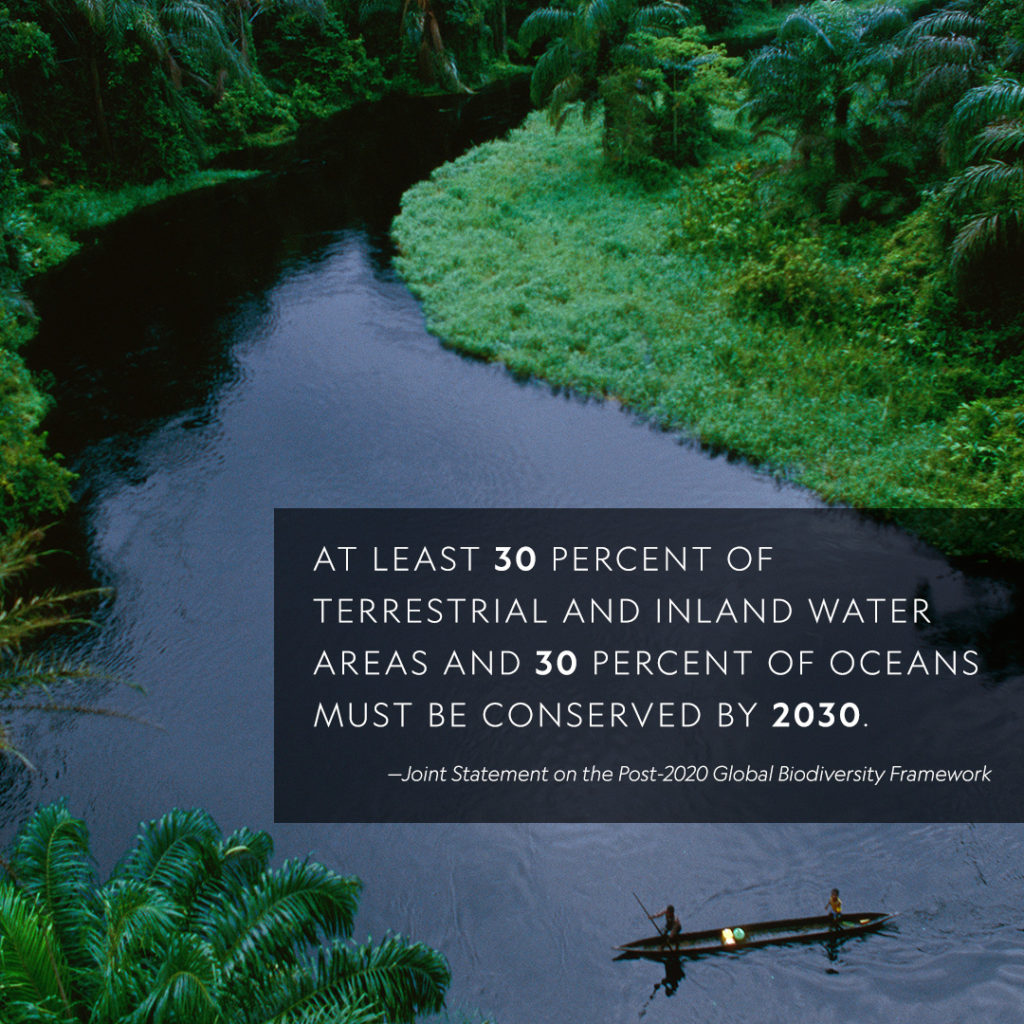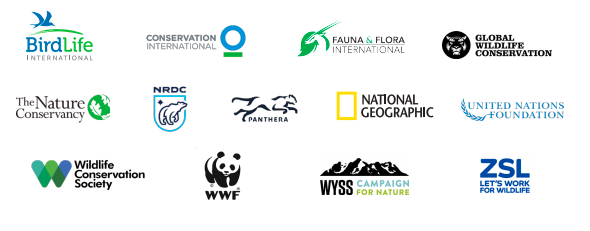
Image: National Geographic Society
There is a call for another “new deal” growing globally — this one a New Deal for Nature — and twelve of the largest international environmental groups are united behind it. They launched their campaign yesterday, with a powerful message — “Securing Earth’s biological diversity is a moral obligation. It is also critical in averting catastrophic climate change and ecosystem collapse.” They believe that we need to conserve 30 percent of terrestrial and inland water areas and 30 percent of oceans (dubbed “30 by 30”) through an effectively and equitably managed, ecologically representative, well-connected systems of highly protected areas. Scientists argue that protected areas are much more resilient to damage from climate change or other human impacts.
According to a blog by the National Geographic Society about the initiative, “Threats to the natural world have grown increasingly dire. The facts and figures from the past half century alone are staggering: more than 50 percent of our tropical forests and more than 60 percent of all wildlife populations have been wiped out. Today, 90 percent of the world’s fisheries are exploited or overfished.” The problem we face is that today, protected areas cover just 15 percent of the land and 7 percent of the ocean.
- The green groups that have come together are planning for the 2020 meeting of the United Nations Convention on Biological Diversity in Beijing as a key turning point because decision-makers from more than 190 countries will gather then to agree to an ambitious new plan to safeguard nature by 2050 — and find broad agreement around a document called the New Deal for Nature.
- “If we are to achieve global goals for sustainable development, we need to keep half the planet in its natural state. At the National Geographic Society, we believe protecting 30 percent of the planet by 2030 is a vital milestone on the path toward a planet in balance.”
said Dr. Jonathan Baillie, National Geographic Society Executive Vice President and Chief Scientist.
The groups involved are some of the largest in the entire movement including National Geographic, Conservation International, and the World Wildlife Fund. Their bold “30 by 30” target is intended to make a giant leap forward to prevent another major extinction event, that some have predicted is imminent.
Why This Matters: This is a moment in time in which we can take action to make the future much better than it would be otherwise. But it won’t happen unless we recognize this moment and seize it to change the trajectory we are on. It is true for climate change, and for conserving the natural world in general. Moreover, we need a clear and measurable goal to aim for if we want to effect change. Even without the negative impacts of climate change, the loss of habitat and overexploitation of natural resources that we as humans are causing would be devastating unless we alter our behavior. Sir David Attenborough said it best in the interview he gave at Davos a week ago, “The natural world is the source of all wonder and the future of the natural world is in our hands. We can wreck it with ease…and if we wreck the natural world, we wreck ourselves.”

February 1, 2019 » 30 by 30, biodiversity, CBD, climate change, Conservation International, Earth, extinction, habitat, land, loss, National Geographic Society, ocean, protect, species, World Wildlife Fund


